Meat Processing Machine: Revolutionizing the Industry
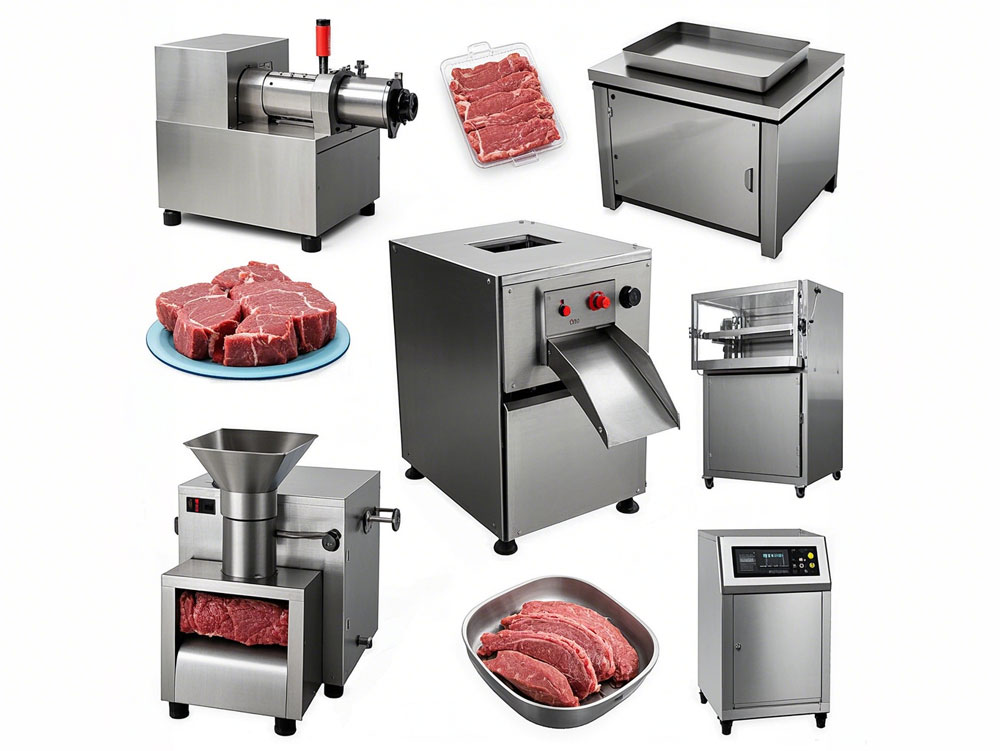
Introduction
The Growing Importance of Meat Processing Machines in Modern Food Production
The role of meat processing machines in today’s food production landscape cannot be overstated. As consumer demand for high-quality, consistent products grows, so too does the need for innovative solutions in meat processing. These machines are essential in delivering efficiency, precision, and hygiene—key factors in ensuring that food safety standards are met while increasing production output.
Overview of Meat Processing Machines and Their Functions
Meat processing machines are designed to automate various stages of meat production, from cutting and grinding to packaging and preservation. They eliminate manual labor, improve speed, and maintain the integrity of the meat throughout the processing journey. Whether it’s grinding, slicing, or dicing, these machines offer an invaluable advantage in both large-scale commercial operations and smaller businesses.
How Meat Processing Machines are Revolutionizing the Industry
The introduction of these machines has changed the meat processing industry in profound ways. Automated systems now handle tasks that were once labor-intensive, leading to faster production speeds, reduced human error, and enhanced product quality. With continued innovation, meat processing machines are becoming smarter, more efficient, and better equipped to meet modern food production demands.
Types of Meat Processing Machines
Meat Grinder Machines: The Foundation of Efficient Processing
The meat grinder machine is one of the most fundamental pieces of equipment in any meat processing operation. It is used to grind meat into various consistencies, ranging from coarse to fine. By automating this process, businesses can ensure consistency in their ground meat products, whether for sausages, burgers, or other meat-based foods.
Meat Slicer Machines: Precision and Consistency in Cutting
Meat slicer machines are vital for slicing meats into uniform pieces. This equipment is essential for businesses that require thin or thick slices of deli meats, steak cuts, or other meat products. The precision of the cuts enhances the presentation of the final product while maintaining uniformity, essential for meeting customer expectations.
Meat Dicing Machines: For Perfect Cubes Every Time
A meat dicer is perfect for creating uniform cubes for dishes like stews, kebabs, or ready-to-cook meal kits. This machine automates the dicing process, ensuring consistent sizes and shapes that improve the overall presentation and cooking quality of the product.
Sausage Stuffing Machines: Crafting Sausages with Ease
Sausage stuffing machines are designed to speed up the process of stuffing casings with seasoned meat. These machines provide uniformity in the sausage’s filling and casing, ensuring that the final product is consistent in size and texture, critical for meeting quality standards.
Meat Tenderizers: Enhancing Texture and Flavor
Tenderizing machines break down the muscle fibers in tougher cuts of meat, improving both texture and flavor. By mechanically tenderizing the meat, businesses can provide customers with a product that is both easier to cook and more enjoyable to eat.
Vacuum Sealers: Preserving Freshness for Longer Shelf Life
Vacuum sealers remove air from meat packaging, significantly prolonging its shelf life. By preserving freshness and preventing contamination, these machines are crucial for reducing waste and maintaining product quality during storage and transportation.
Meat Mixing Machines: Combining Ingredients for Flavor and Consistency
Meat mixing machines are used to combine meat with various spices, seasonings, and other ingredients. Whether for burgers, sausages, or meatballs, these machines ensure that the ingredients are evenly distributed, leading to a balanced flavor profile and consistent texture in every batch.
Choosing the Right Meat Processing Machine
Key Factors to Consider When Selecting a Meat Processing Machine
When choosing a meat processing machine, it’s essential to consider several factors such as production volume, required output, and the specific types of meat being processed. Understanding the capacity and capabilities of different machines ensures that the right choice is made based on your business needs.
How to Choose a Machine Based on Production Capacity
A machine’s production capacity must align with the volume of meat being processed in a given timeframe. For larger operations, high-capacity machines are necessary to meet demand. Smaller businesses, on the other hand, may need machines that offer more flexibility in terms of batch processing and variety.
Understanding the Materials and Build Quality for Durability
Durability is a critical factor in choosing a meat processing machine. Stainless steel, for example, is a popular material because it resists rust and corrosion. The sturdiness of the machine will affect its lifespan, so it’s important to invest in equipment that can handle the wear and tear of daily use.
Energy Efficiency: Saving Costs and Reducing Environmental Impact
Energy-efficient machines are an investment in the long term. Not only do they save money on electricity bills, but they also contribute to sustainability goals by reducing overall energy consumption. Look for machines with high energy ratings that optimize power usage while maintaining high performance.
Automated vs Manual Machines: Which is Right for Your Business?
Automation is transforming meat processing. Automated machines can process larger quantities of meat more quickly and with fewer human resources. However, manual machines may still be suitable for smaller operations or those requiring more hands-on attention. The choice depends on the specific needs of your business.
Features of High-Quality Meat Processing Machines
Robust Construction: Ensuring Longevity and Performance
High-quality meat processing machines should be built to last. A machine with robust construction will not only deliver excellent performance but will also withstand the constant demands of a busy production environment. Look for machines made with heavy-duty materials designed for industrial-grade use.
Ease of Cleaning and Maintenance for Hygiene Standards
Hygiene is paramount in food processing. Machines that are easy to clean, with smooth surfaces and removable parts, ensure that sanitary standards are met and maintained. Machines with automated cleaning functions can further streamline this process.
Advanced Safety Features: Protecting Operators and Preventing Accidents
Safety is a top priority in any meat processing facility. Machines with advanced safety features, such as emergency stop buttons, protective covers, and automatic shut-off functions, help prevent accidents and ensure operator protection during operation.
Adjustable Settings for Versatility in Meat Processing
Flexibility is key when working with various meat types and cutting specifications. Look for machines that offer adjustable settings, allowing for customization of processing speeds, cutting thickness, and other factors to suit different product requirements.
Integration with Other Equipment: Building an Efficient Production Line
Meat processing machines should be compatible with other equipment in the production line. Efficient integration allows businesses to streamline their workflows, reduce bottlenecks, and increase overall production efficiency.
Benefits of Investing in Meat Processing Machines
Increased Efficiency: How Machines Streamline Operations
Meat processing machines automate repetitive tasks, significantly improving workflow efficiency. They reduce the time spent on manual labor, leading to faster production cycles and quicker order fulfillment.
Consistency and Precision in Meat Processing
Machines provide the precision and consistency that manual labor cannot. Whether it’s grinding meat to a specific texture or slicing it to the perfect thickness, meat processing machines ensure uniformity, which is crucial for maintaining product quality.
Reducing Labor Costs: A Smart Investment for Any Business
Although meat processing machines require an upfront investment, they lead to reduced labor costs in the long term. By automating labor-intensive tasks, businesses can cut down on the number of workers needed for processing, allowing them to allocate resources more efficiently.
Improved Product Quality and Appearance
Meat processing machines ensure that every product meets the same high-quality standards. By eliminating human error, businesses can offer a more consistent product to their customers, which is crucial for building brand loyalty and customer satisfaction.
Time Savings and Faster Turnaround on Orders
Time is a valuable commodity in any business. Meat processing machines speed up the production process, allowing companies to meet tight deadlines and handle larger orders without compromising quality.
Enhancing Worker Safety and Reducing Injuries
Automating the meat processing tasks reduces the need for workers to perform repetitive and potentially hazardous tasks, such as cutting or grinding by hand. This helps improve workplace safety and reduces the risk of injuries.
Common Applications of Meat Processing Machines
Commercial Meat Processing: Meeting Large-Scale Demand
Large-scale meat processing operations rely heavily on advanced machines to handle high-volume production. These machines help meet the demands of retailers, wholesalers, and food manufacturers, ensuring that meat products are processed efficiently and safely.
Butcher Shops: Upgrading Operations for Better Service
Butcher shops use meat processing machines to offer customers freshly cut, high-quality meats with a quicker turnaround time. These machines allow for precision cutting and dicing, helping butchers deliver exactly what the customer wants.
Restaurant Kitchens: Efficient Meat Preparation for Busy Services
In busy restaurant kitchens, meat processing machines help chefs prepare meats quickly and consistently. Whether it’s slicing steaks or grinding meat for burgers, these machines help kitchens keep up with demand during peak service hours.
Home Use: How Meat Processing Machines Can Benefit Small-Scale Operations
Small-scale meat processors, such as those who prepare home-cooked meals or small-batch products, can benefit greatly from using meat processing machines. These machines offer greater control over the quality and consistency of the meat they use while saving time.
Technological Advancements in Meat Processing Machines
Digital Controls and Automation: The Future of Meat Processing
Meat processing is becoming increasingly automated, with digital controls that allow operators to manage and monitor the entire production process from a single interface. These advancements provide greater control, reduce human error, and improve product consistency.
IoT Integration: Smart Machines for Smarter Operations
The integration of the Internet of Things (IoT) in meat processing machines allows for real-time monitoring and performance tracking. This data can be used to optimize production, track inventory, and predict maintenance needs, ultimately increasing operational efficiency.
The Role of Artificial Intelligence in Optimizing Meat Processing
Artificial intelligence (AI) is beginning to play a significant role in the optimization of meat processing. AI can analyze data from processing machines, predict maintenance issues, and even suggest improvements to production lines based on real-time performance data.
Enhancements in Precision and Speed Through Advanced Engineering
Modern meat processing machines benefit from cutting-edge engineering, allowing for faster processing speeds without compromising precision. These advancements in design and technology enable businesses to scale their operations without sacrificing quality.
Maintenance and Care for Meat Processing Machines
The Importance of Regular Maintenance for Longevity
Routine maintenance is essential to ensuring that meat processing machines continue to function efficiently. Regular checks and adjustments can prevent downtime, improve machine lifespan, and ensure that the machines are operating at their optimal performance.
Routine Cleaning Practices for Optimal Hygiene and Functionality
Keeping meat processing machines clean is critical for food safety. Regular cleaning ensures that the machines remain hygienic and functional, preventing contamination and buildup that could affect the quality of the meat.
Troubleshooting Common Issues with Meat Processing Machines
Identifying and fixing common issues, such as motor malfunctions or blockages, is crucial to minimizing downtime. Operators should be trained to spot and resolve issues quickly, ensuring that production can resume with minimal disruption.
How Preventative Maintenance Can Save You Money in the Long Run
Investing in preventative maintenance reduces the likelihood of unexpected breakdowns, which can be costly in terms of repair and lost production time. Regular servicing ensures that the machines continue to operate smoothly and efficiently.
Environmental Impact and Sustainability
Reducing Waste in the Meat Processing Industry
Meat processing machines play an important role in minimizing waste. Machines that process meat with precision ensure that every cut and product is used effectively, reducing byproducts and optimizing resource utilization.
Energy-Efficient Models: Lowering Carbon Footprints
Energy-efficient meat processing machines use less power while still delivering high performance. These machines not only save businesses money but also help reduce the carbon footprint of the production process, contributing to more sustainable operations.
Innovations in Sustainable Meat Processing Technologies
New technologies in the meat processing industry are focusing on sustainability. From energy-efficient machines to innovations that reduce water usage, businesses are adopting greener practices to minimize their environmental impact.
How Meat Processing Machines Contribute to Eco-Friendly Practices
By integrating sustainable materials and energy-saving features, meat processing machines are supporting eco-friendly practices in food production. These machines help businesses meet their environmental goals while improving overall efficiency.
Legal and Regulatory Considerations in Meat Processing
Compliance with Food Safety Standards: Ensuring Quality and Safety
Meat processing machines must comply with stringent food safety regulations to prevent contamination and ensure consumer health. Compliance with standards like HACCP and FDA regulations is essential for all processing operations.
The Role of HACCP in Meat Processing Operations
The Hazard Analysis Critical Control Point (HACCP) system is critical for identifying and controlling potential risks during meat processing. Machines that are designed with HACCP compliance in mind help ensure that the meat produced is safe for consumption.
How to Ensure Your Meat Processing Machines Meet Industry Regulations
It’s important to verify that your meat processing equipment meets local and international regulations. This can include certifications, inspections, and audits to confirm that the machines operate according to health and safety standards.
Navigating Certifications and Approvals for Global Markets
When expanding into global markets, businesses must ensure their machines meet international standards. This can involve obtaining certifications and approvals, depending on the country’s regulations for meat processing equipment.
Cost Considerations When Purchasing Meat Processing Machines
Initial Investment: How to Budget for Meat Processing Equipment
Purchasing meat processing machines can be a significant investment. It’s important to carefully budget for the upfront costs, which can vary depending on the machine’s features, capacity, and functionality.
Return on Investment: How Machines Pay for Themselves Over Time
While the initial investment in meat processing machines may be high, the return on investment (ROI) can be substantial. Faster processing, reduced labor costs, and improved product quality contribute to long-term savings and profitability.
Hidden Costs to Consider: Installation, Maintenance, and Upgrades
When purchasing meat processing machines, it’s essential to account for hidden costs such as installation, regular maintenance, and potential upgrades. These expenses can affect the total cost of ownership, so budgeting for them is critical.
Comparing Models: Finding the Best Value for Your Budget
There are many models of meat processing machines on the market, each with different features and price points. Comparing models and evaluating the value they offer in terms of productivity, reliability, and performance will help businesses make an informed decision.
Scaling Up Production with Meat Processing Machines
The Benefits of Expanding Your Meat Processing Capacity
As demand for meat products grows, scaling up production becomes necessary. By investing in additional meat processing machines, businesses can meet this demand while maintaining high product quality and consistency.
Adding More Machines: How to Optimize Your Production Line
When expanding production, it’s essential to optimize the entire production line. Integrating additional machines effectively ensures that each stage of production is streamlined, preventing bottlenecks and improving overall efficiency.
Managing Increased Demand Without Sacrificing Quality
Scaling up production doesn’t mean sacrificing quality. By upgrading equipment and expanding processing capacity, businesses can handle increased demand while maintaining the high standards that customers expect.
Strategies for Efficiently Scaling Up Operations
When scaling operations, businesses should implement strategies that enhance efficiency. This includes evaluating workflow, investing in automation, and ensuring that new machines integrate seamlessly with existing equipment.
Troubleshooting and Handling Common Meat Processing Machine Problems
Diagnosing and Fixing Mechanical Issues
Understanding the common mechanical issues that can occur with meat processing machines, such as motor failures or gearbox malfunctions, allows operators to troubleshoot effectively. Routine checks can prevent these issues from disrupting production.
How to Deal with Machine Jams and Blockages
Machine jams and blockages are a common occurrence in meat processing. Regular maintenance and proper handling techniques can minimize the risk of these issues, keeping the machines running smoothly.
Dealing with Inconsistent Results and Poor Quality Cuts
If meat processing machines produce inconsistent cuts or poor-quality results, the cause may lie in misaligned parts, dull blades, or incorrect settings. Regular calibration and attention to detail can solve these problems.
When to Call a Professional vs DIY Fixes
While basic troubleshooting can be handled in-house, more complex issues may require professional repair services. Understanding when to call a technician can save businesses time and money while ensuring the machine is fixed properly.
Best Practices for Operating Meat Processing Machines
Training Your Staff for Safe and Efficient Operation
Proper training is critical for ensuring that operators handle meat processing machines safely and efficiently. Training should cover machine operation, safety protocols, and basic troubleshooting techniques to minimize risks and maximize productivity.
How to Maximize Machine Performance for Consistent Results
To achieve the best results, operators should understand the optimal settings for each machine and product type. Regular calibration, proper cleaning, and maintenance will ensure that machines consistently perform at their peak.
The Role of Operators in Maintaining High Production Standards
Operators play a key role in maintaining high standards of production. By closely monitoring machine performance and adhering to best practices, operators ensure that products meet quality expectations and safety standards.
Safety Protocols to Follow When Operating Meat Processing Machines
Establishing strict safety protocols is essential in any meat processing environment. This includes wearing protective gear, following emergency procedures, and maintaining a clean and organized workspace to prevent accidents.
Innovations and Future Trends in Meat Processing Machines
The Rise of Automation and Robotics in Meat Processing
Automation and robotics are transforming the meat processing industry, with machines capable of handling complex tasks like deboning, sorting, and packaging. These innovations are driving productivity and reducing human error.
Emerging Technologies: How AI and Machine Learning are Shaping the Industry
Artificial intelligence and machine learning are being integrated into meat processing machines to optimize performance. These technologies can analyze production data, predict maintenance needs, and fine-tune machine operations for greater efficiency.
The Potential of 3D Printing in Meat Production and Processing
3D printing technology holds significant potential for meat production, allowing for the creation of customized cuts or even lab-grown meat. As this technology matures, it may revolutionize the way meat is processed and produced.
The Future of Sustainability in Meat Processing Equipment
Sustainability will continue to be a driving force in the development of meat processing equipment. Innovations in energy efficiency, waste reduction, and sustainable materials will ensure that the industry moves towards more environmentally friendly practices.
Conclusion
Why Investing in Meat Processing Machines is Essential for Success
Investing in high-quality meat processing machines is essential for businesses looking to improve efficiency, product consistency, and profitability. These machines offer significant advantages in terms of both performance and long-term savings.
Final Thoughts on Maximizing Efficiency and Quality in Meat Processing
The right meat processing machines can enhance every aspect of production, from raw material handling to finished product packaging. By choosing the right equipment and maintaining it properly, businesses can stay ahead in an increasingly competitive industry.
Looking Ahead: The Future of Meat Processing and Technological Advancements
As the industry continues to evolve, innovations in automation, AI, and sustainability will further transform meat processing. Businesses that embrace these advancements will be well-positioned for success in the years to come.
Must-Read Blogs For Chain Restaurants Owner








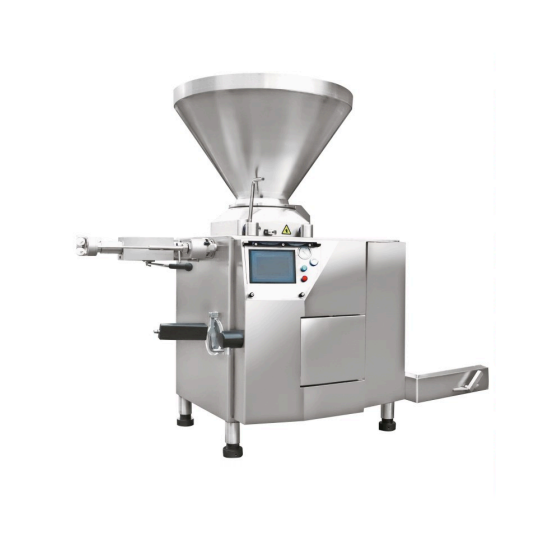
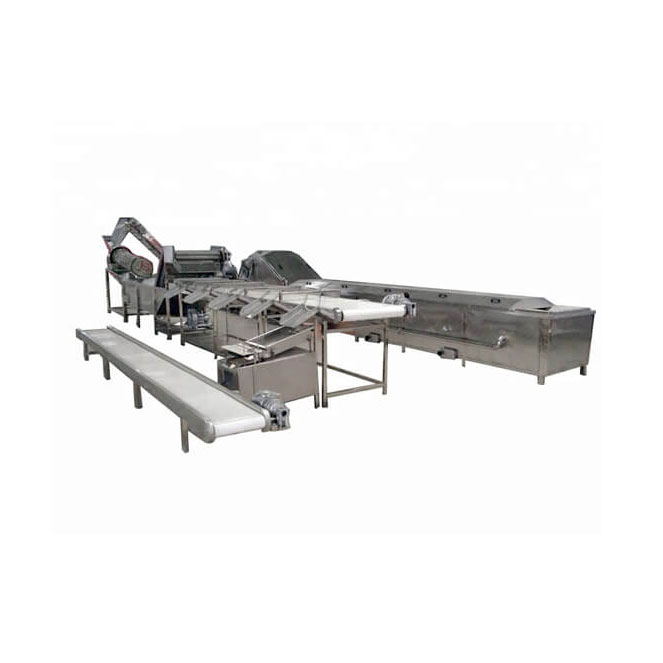
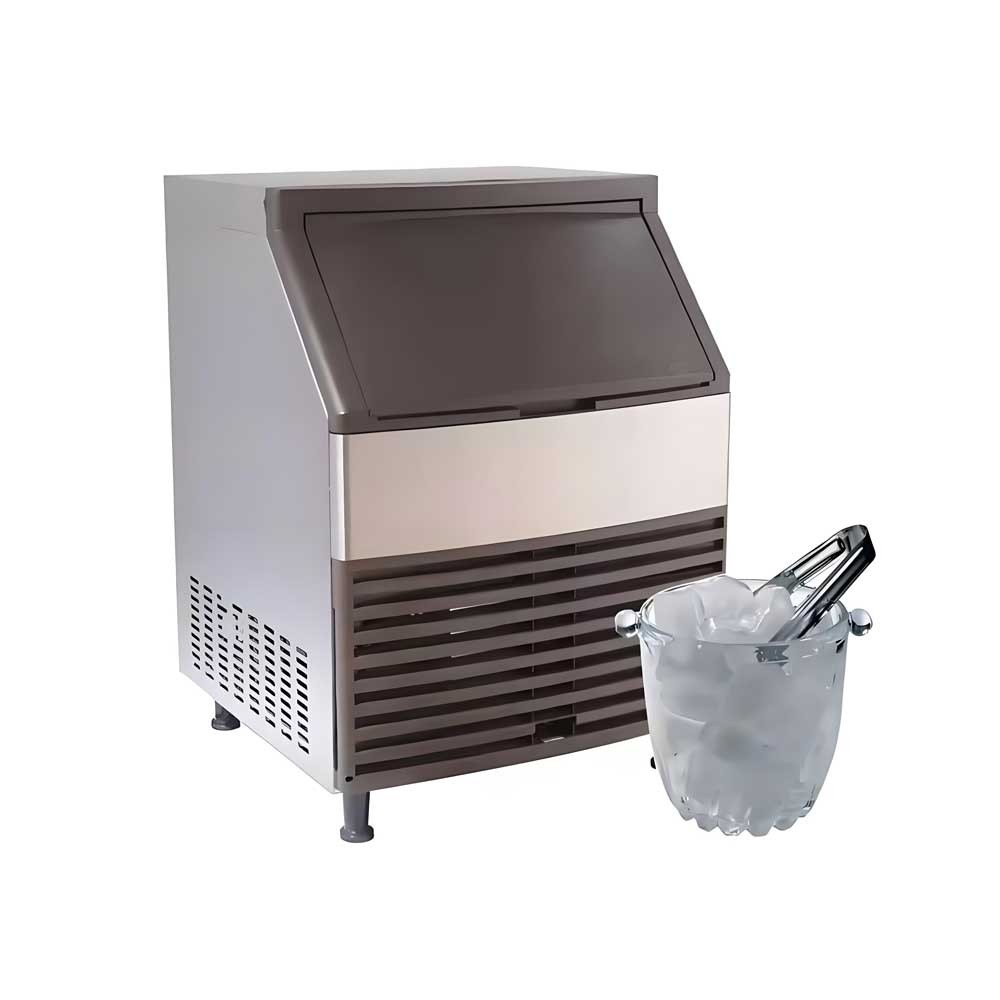
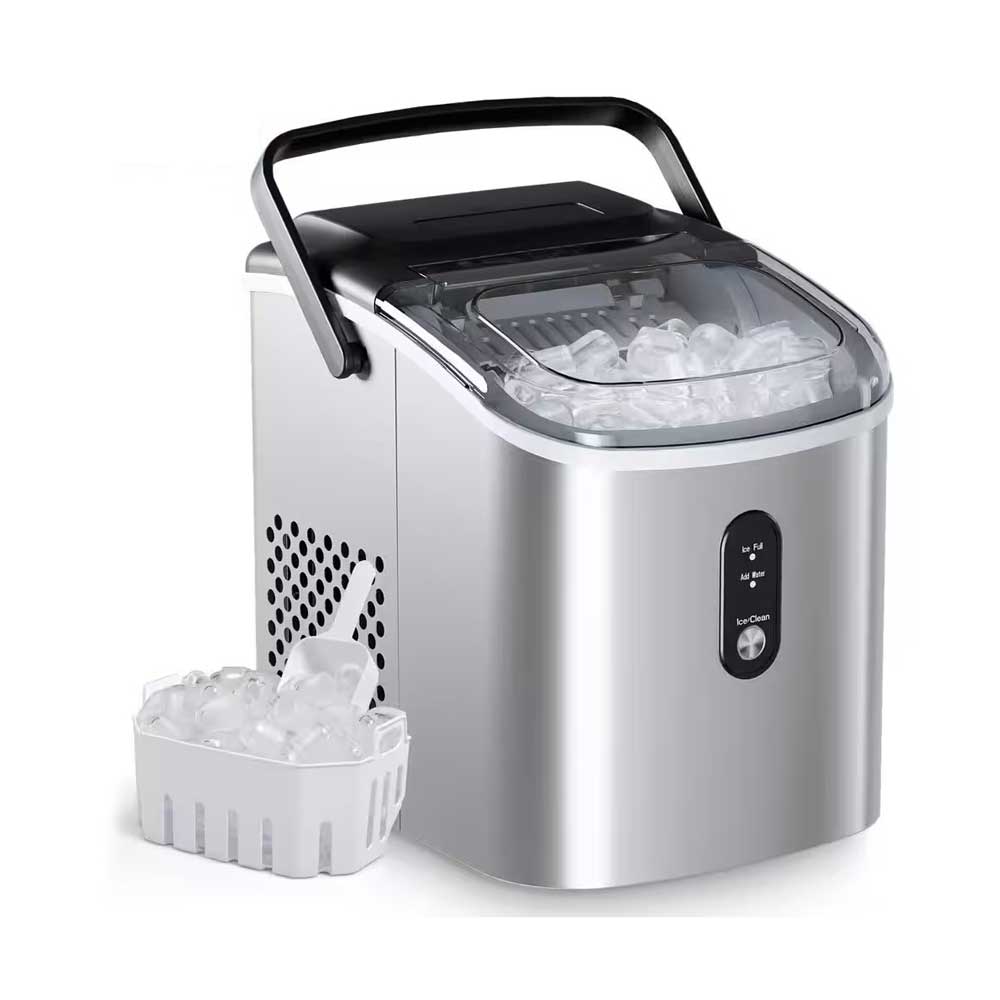 Portable Flake Ice Machine
Portable Flake Ice Machine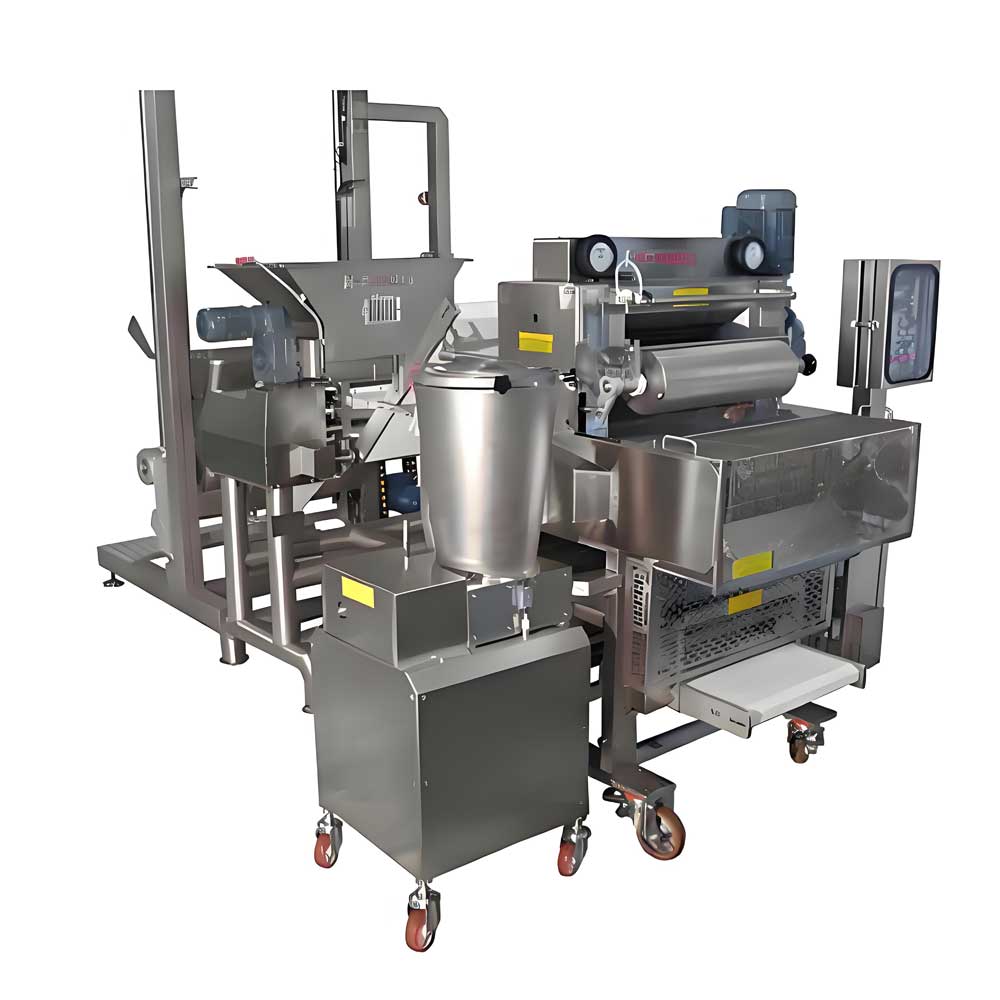 Pelmeni Making Machine
Pelmeni Making Machine
Ready to Get Started?